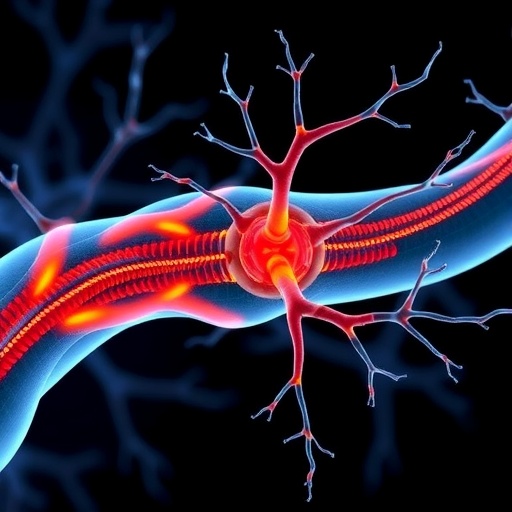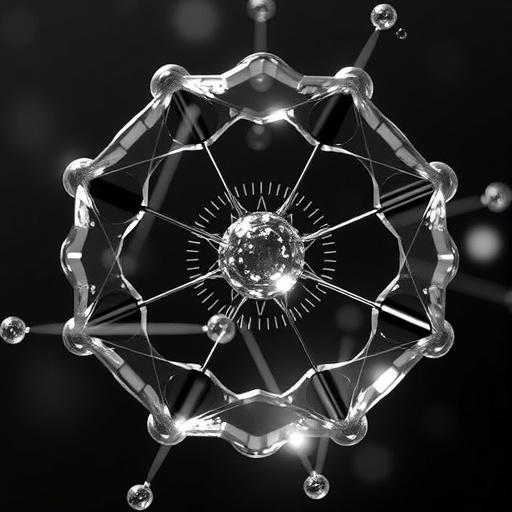
In the evolving intersection of forensic anthropology and artificial intelligence, a groundbreaking study has emerged that promises to revolutionize one of the field’s most challenging tasks: age estimation from skeletal remains. The research, led by Irurita Olivares and colleagues, presents a sophisticated comparison between AI-driven morphological analysis of the pubic symphysis and assessments made by both experienced and novice practitioners. Central to this work is a newly developed atlas for component labeling, which serves as a foundational tool in both human and machine evaluations.
Age estimation is a cornerstone in forensic investigations, aiding in the identification of unknown human remains and contributing vital information in legal contexts. Conventional methods rely heavily on expert interpretation of morphological features, particularly those present in the pubic symphysis—a joint at the pelvis that undergoes predictable changes throughout adult life. However, the subjective nature of such assessments often leads to variability between experts, complicating precision and consistency. Against this backdrop, artificial intelligence offers a tantalizing prospect: automating and standardizing analysis to enhance reliability.
The study’s innovative approach hinges on harnessing AI algorithms trained to analyze pubic symphysis morphology with unprecedented granularity. Utilizing high-resolution imaging data, the researchers developed a comprehensive atlas to delineate specific components and features within the pubic symphysis structure. This atlas acts not only as a guide for human practitioners but also as a training framework for machine learning models, enabling the AI system to ‘recognize’ and categorize age-related morphological markers.
.adsslot_UlDSyF4Nsw{width:728px !important;height:90px !important;}
@media(max-width:1199px){ .adsslot_UlDSyF4Nsw{width:468px !important;height:60px !important;}
}
@media(max-width:767px){ .adsslot_UlDSyF4Nsw{width:320px !important;height:50px !important;}
}
ADVERTISEMENT
Crucially, the research team embarked on a detailed comparison, pitting AI-based estimations against those made by practitioners differing widely in experience. This juxtaposition illuminated significant insights into the efficacy and accuracy of AI methods relative to human judgment. Experienced professionals often draw on years of pattern recognition and nuanced understanding, whereas novices are more prone to inconsistencies and inaccuracies. AI, by contrast, offers objective, repeatable analysis grounded in mathematical modeling.
The findings revealed that AI algorithms, when trained with the new atlas, not only matched but in certain respects surpassed human experts in age estimation accuracy. The machine learning models demonstrated a remarkable ability to discern subtle textural and structural changes in the pubic symphysis—details that might elude even seasoned anthropologists. Furthermore, AI estimations showed less variability compared to novice practitioners, underscoring the potential of technology to elevate baseline competence across the board.
Another significant dimension of this research lies in its methodological rigor. The authors meticulously curated a diverse dataset encompassing a broad age range, ensuring the AI system’s robustness against biological variation and population-specific traits. This comprehensive approach mitigates the risk of overfitting and enhances the generalizability of AI models to forensic cases worldwide. By integrating morphological data with advanced computational techniques, the study exemplifies the power of interdisciplinary collaboration.
The atlas itself represents a landmark achievement beyond its immediate forensic applications. By systematically cataloging pubic symphysis components and their age-related transformations, it provides a standardized reference with far-reaching implications for education and training. Novices, who traditionally face steep learning curves, can leverage this resource to build foundational knowledge and interpretation skills. Concurrently, it establishes a common vocabulary for both human and AI analyses, fostering consistency in age estimation protocols.
At the core of the AI methodology is a convolutional neural network (CNN) architecture tailored for morphological feature extraction. CNNs excel at processing visual information, making them ideal for interpreting complex anatomical images. Through iterative learning cycles, the AI model refined its pattern recognition capabilities, aligning predicted age categories with known chronological ages. This alignment was quantitatively evaluated using statistical metrics, confirming the robustness of the AI’s predictive power.
In addition to enhancing accuracy, the AI framework introduces substantial efficiency benefits. Traditional manual examination of pubic symphysis morphology is time-consuming and demands specialized expertise. The automation potential unlocked by this research could streamline forensic workflows, allowing rapid, objective age estimations in forensic pathology labs with limited human resources. This scalability is particularly valuable in mass disaster scenarios or in regions with scarce forensic specialists.
Despite its promise, the integration of AI in forensic age estimation is not without challenges. Ethical considerations emerge regarding reliance on algorithmic outputs, necessitating transparency in model decision-making processes. The study addresses this by emphasizing that AI serves as an assistive tool augmenting, rather than replacing, human expertise. By providing a dual-layer verification system—human judgment cross-checked with AI predictions—the forensic process gains both rigor and accountability.
Looking ahead, the implications of such AI-driven advancements extend beyond forensic science. Anthropological research, bioarchaeology, and even clinical medicine stand to benefit from detailed, reproducible morphological assessments. Future research avenues may explore the applicability of similar AI models to other skeletal regions or integrate multimodal data inputs, such as genetic or biochemical markers, to refine age estimation further.
Importantly, this study exemplifies how modern technology can bridge gaps between novice and expert practitioners. By providing accessible, empirically validated resources, the gulf in skill and confidence is narrowed, democratizing high-quality forensic analyses worldwide. Such democratization could reduce disparities in legal outcomes dependent on forensic evidence, fostering greater justice and accuracy in judicial proceedings.
The study’s robust experimental design, incorporating blinded evaluations and cross-validation, strengthens confidence in its conclusions. By ensuring objective comparison free from observer bias, the researchers have laid a strong foundation for subsequent validation efforts. Adoption of this AI-based methodology promises to set new standards for forensic age estimation, marking a transformative moment in the discipline.
In essence, the convergence of artificial intelligence and forensic anthropology heralds an era of enhanced precision, objectivity, and efficiency. This pioneering research by Irurita Olivares et al. illuminates a path toward integrating advanced computational techniques with traditional morphological assessments, delivering tools that not only augment human capacity but redefine possibilities in legal medicine. As AI continues to mature, its role as an indispensable partner to forensic experts seems not only plausible but inevitable.
Subject of Research:
Comparison of artificial intelligence-based age estimation using morphological analysis of the pubic symphysis versus human practitioners of varying experience levels, incorporating a newly developed atlas for component labeling.
Article Title:
Comparison among artificial intelligence-based age estimation from morphological analysis of the pubic symphysis versus experienced and novice practitioners using a new atlas for component labeling.
Article References:
Irurita Olivares, J., Gámez-Granados, J.C., Rubio Salvador, Á. et al. Comparison among artificial intelligence-based age estimation from morphological analysis of the pubic symphysis versus experienced and novice practitioners using a new atlas for component labeling. Int J Legal Med (2025). https://doi.org/10.1007/s00414-025-03511-4
Image Credits: AI Generated
Tags: age estimation accuracyAI algorithms in forensic scienceAI in forensic anthropologycomponent labeling atlas in anthropologyexpert vs AI assessmentforensic investigation methodshigh-resolution imaging in forensicsinnovative forensic researchmorphological analysis techniquespubic symphysis age estimationskeletal remains analysisstandardizing forensic analysis





